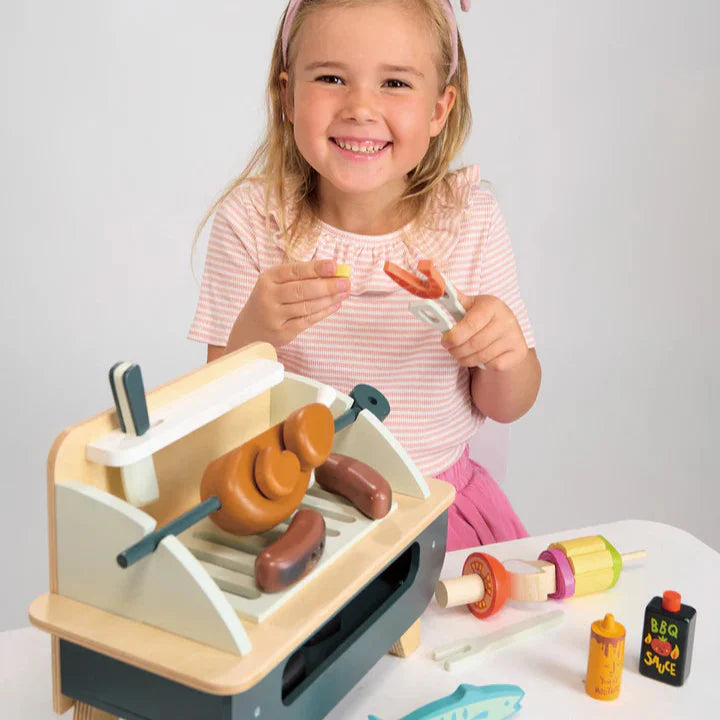Nurturing Independence: Montessori Strategies for Confident Toddlers
Share

Introduction
Toddlers radiate the fierce refrain “I can!” Long before they can articulate the words, they reach for the spoon, drag chairs to climb, and insist on closing drawers themselves. Dr Maria Montessori recognised this drive for self‑construction as a vital human need. At 16 months, my daughter embodies that need, and our living‑room shelf—six simple spaces—has become her laboratory of independence.
The Absorbent Mind in Action
Montessori described the child under six as possessing an absorbent mind: a brain that builds itself directly from surrounding impressions. Every texture, tone of voice, and pause we offer is absorbed and converted into neural wiring. When my daughter watches me wipe a window, she is not merely entertained; she is practising coordination, expanding vocabulary, and sensing that her contribution matters. The clearer and more orderly her environment, the clearer the internal blueprint she constructs for future action.
Designing a “Yes‑Ready” Home Environment
Our goal is a space that consistently says yes to purposeful work and safe exploration.
Key Elements
| Element | Implementation at Home | Why It Matters |
|---|---|---|
| Six invitations | Five activities + one Duplo basket | Limited options deepen focus and simplify tidy‑up. |
| Authentic tools | Glass ramekin jug, ceramic espresso cup for pouring | Real weight and texture convey that her work is meaningful. |
| Order & beauty | Matching trays, single potted fern, clear left‑to‑right layout | Visual harmony cultivates inner calm and respect. |
| Freedom to move | Low shelves, floor mat, cleaning cupboard within reach | Independence requires physical ability to act unaided. |
"Never help a child with a task at which he feels he can succeed." — Maria Montessori
Practical Life Invitations
Below are four everyday activities that nurture concentration, coordination, and confidence.
-
Self‑Feeding
My daughter uses two identical spoons at meals. If one flips awkwardly, she hands it to me for a quick reset, then takes back control—an elegant dance of support and autonomy. -
Transferring Objects
With smooth crystals, my daughter moves each piece from box to tray. After roughly 15 minutes she tires and tosses one—her signal that the challenge‑to‑interest ratio needs adjusting. -
Care of the Environment
A mini spray bottle, cotton cloth, and child‑sized squeegee allows my daughter to wash windows beside me. The rhythmic spritz‑wipe pattern restores calm after crystal fatigue and delivers visible results she can admire. -
Ring‑Stacker Exploration
Sequence is irrelevant for now; mastery is sliding rings on and off. I demonstrate size order only when she seeks my eyes. More notable is how she now carries the toy with two hands each time she lifts it—self‑taught after one gentle lesson on safe carrying.
"The child becomes a person through work." — Maria Montessori
Guiding with Grace: The Adult’s Toolkit
Pause, observe, and trust are the invisible tools that keep independence thriving.
- Five‑second rule: Wait silently before helping; competence often blooms in that pause.
- Demonstrate, then retreat: Offer a slow, precise model and step back.
- Name the effort, not the result: “You carried the water so steadily” values process over perfection.
- Redirect instead of reprimand: When objects fly, shift to a heavier job or outdoor task.
-
Rotate with purpose: Change trays fortnightly, but keep favourites longer to honour repetition.
Following Sensitive Periods
Montessori identified windows when children naturally fixate on certain skills. Aligning activities with these urges ensures effortless engagement.
| Sensitive Period | Signs You’ll See | Home Invitations |
|---|---|---|
|
Order |
Distress when routines shift | Keep shelf layout consistent; replace one tray at a time. |
| Movement (0–4 yrs) |
Climbing, carrying, pushing | Provide weighted cloths for table wiping; half‑filled ramekins for balance practice. |
| Language (0–6 yrs) |
Echoing words, naming objects | Narrate actions: “You’re turning the spoon slowly,” “The crystal feels cool.” |
Common Hiccups & Gentle Solutions
| Challenge | Why It Happens | Montessori‑Aligned Response |
|---|---|---|
| Throwing materials | Boredom, fatigue, sensory need | Offer a gross‑motor job (window washing, laundry basket push). |
| Refusing to tidy | Task feels endless; adult urgency overwhelms | Make it a hand‑to‑hand relay or sing a short “shelf song.” |
| Constant spills | Coordination still maturing | Keep cloths at child height; treat cleanup as part of the work. |
A Parent’s Reflection
Since simplifying to six activities, our mornings hum. My daughter moves deliberately from spooning to ring stacking, carries her mat to the sunlit corner, and—my favourite—offers me a crystal with a grin before returning to her task. The quieter I become, the louder her independence grows.
Curating Child‑Sized Essentials
Ready to equip your own shelf? Explore our carefully chosen Learn-through-play essentials collection for toys that teach object permanence, cause and effect, nurture hand-eye coordination, and fine motor skills.
Final Thoughts
Independence is not a single milestone but a continuum of tiny triumphs—lifting a ring, wiping a drip, balancing a half‑filled jug. By preparing an environment that whispers “Yes, you can” and resisting the urge to hurry or correct, we honour our children’s innate momentum. May your shelves invite exploration, your pauses reveal hidden competence, and your family discover the quiet magic of helping them to do it by themselves.

